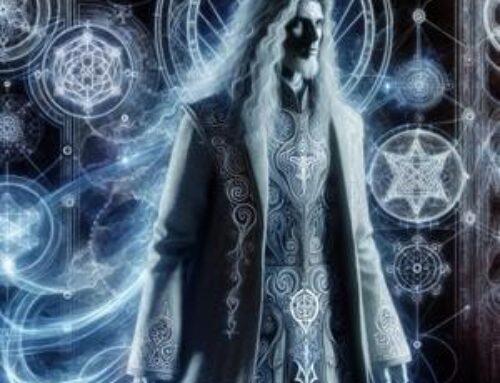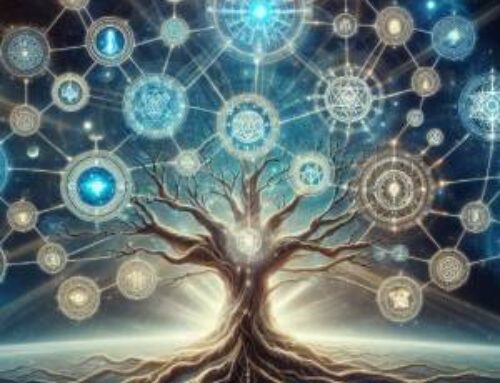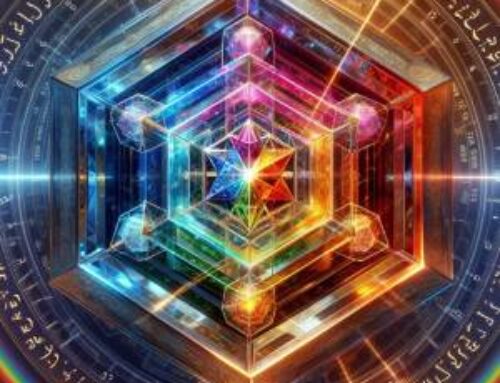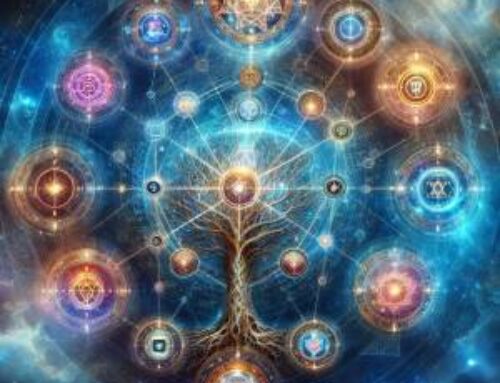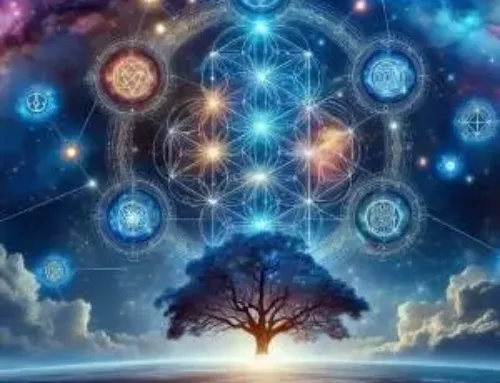Contents
Introduction to “Jesus and Kabbalah”
The blending of Jesus and Kabbalah delves into a captivating mix of beliefs and spiritual revelations. Combining the wisdom of teachings, with the life and teachings of Jesus provides a rich perspective on spirituality that has captivated scholars and mystics over generations. This fusion showcases the depths of Christian esoteric traditions unveiling how Kabbalah offers a unique viewpoint to grasp the divine essence and purpose of Jesus. During the century this fusion influenced numerous European intellectuals shaping their spiritual outlooks and revealing hidden wisdom within sacred texts. The influence is evident in declarations and other mystical writings illustrating how Kabbalistic principles were intertwined with Jesus life and lessons to establish a spiritual framework that transcends traditional religious confines.
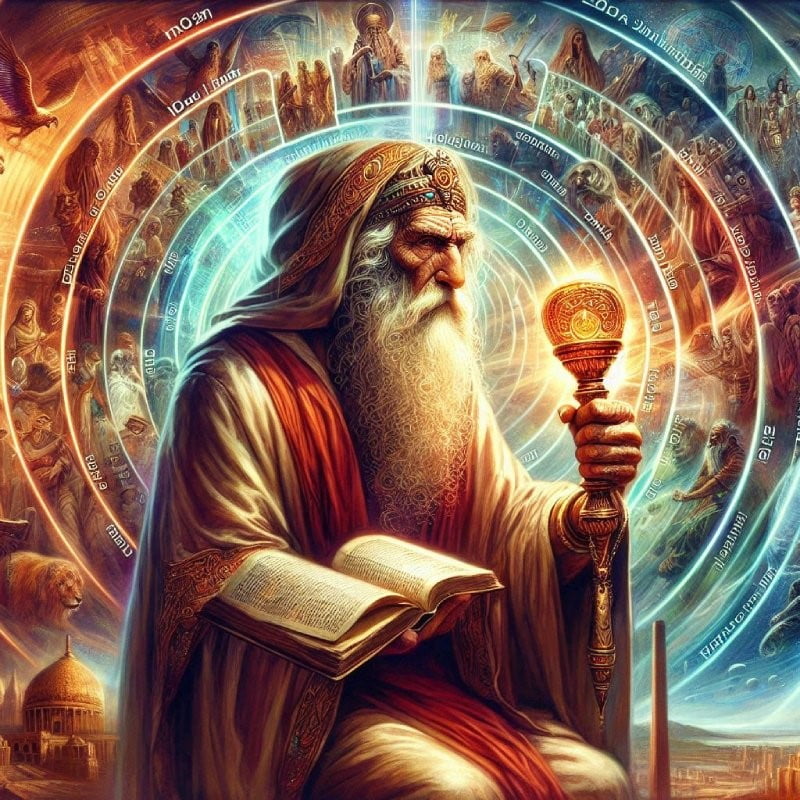
Symbolism around “Jesus and Kabbalah”
Jesus as the Cornerstone
Within lore Jesus is often symbolized as the “stone” rejected by builders that becomes the cornerstone. This symbolism carries significance in doctrine, where the stone (“ABN ‘even” in Hebrew) symbolizes the link, between divinity and humanity. The numerical value associated with “ABN” is 53 corresponding to the number 8 representing unity among energies.
The symbolism highlights Jesus pivotal role in the structure of the world connecting the realm, with the divine. The. Eventual acceptance of the stone as the cornerstone mirror Jesus journey and eventual acknowledgment as a figure in Christian faith.
The Son and Sephiroth
In Kabbalah the concept of the Son (Hebrew; “BN ben”) corresponds to Tiphereth, the Sephirah representing Beauty (1). This Sephirah symbolizes how influence mediates within the realm. It is viewed as where Christ resides in form reflecting balance and harmony in the universe. Jesus as the Son embodies this mediating power by bridging heaven and earth. Tiphereth serves as the heart of Kabbalistic Tree of Life signifying equilibrium among all Sephiroth. This association deepens our understanding of Jesus role as a harmonizer who brings light into our world.
Interpretations of Jesus Teachings in Kabbalah
Kabbalah offers a framework to interpret Jesus teachings on a level. For example when he said “I and the Father are one ” Kabbalistic interpretation sees it as affirming unity, between human nature.
The unity represented by Tiphereth brings together the energies of Kether (the Crown) and Malkuth (the Kingdom) creating a balance. Viewing Jesus mission, through this lens reveals a quest to restore this equilibrium. His teachings on love, compassion and unity echo the ideals of bridging the gap between the spiritual realms guiding his followers towards a comprehensive understanding of their divine purpose.
The Impact of Kabbalah on Christian Mysticism
The Connection to Rosicrucianism
The manifestos, including the Fama Fraternitatis and Confessio Fraternitatis highlight the influence of Kabbalistic philosophy on early Christian mysticism. These writings delve into a wisdom tradition that traces its roots back to figures like Adam, Moses and Solomon. The Rosicrucians delved into hidden meanings within texts using principles to shape their spiritual journey and teachings. Their focus on transformation, esoteric knowledge and pursuit of truth closely mirrors Kabbalistic practices showcasing a mutual pursuit of spiritual awakening.
Alchemical Symbolism
Incorporating symbolism, into Kabbalah enhances our understanding of Jesus significance. The concept of the “Stone of the Wise ” in alchemy is often associated with Jesus as it embodies the essence of divine wisdom (2).
Both alchemists and Kabbalists saw Jesus as the representation of power capable of transforming human nature into spiritual greatness. This process reflects the change promoted by beliefs, where the soul goes through purification and enlightenment to unite with the divine.
Gnosis plays a role in Kabbalah focusing on knowledge of the divine a concept also found in Christian mysticism. Understanding Jesus from a perspective involves a connection, with the divine that goes beyond mere intellectual understanding. This Gnostic aspect is fundamental in both Kabbalah and mystical Christian practices that emerged after the enlightenment. Through meditation, reflection and mystical rituals followers strive to experience the presence of divinity and deepen their connection with the truths embodied by Jesus.
The incorporation of methods in mystical traditions is evident in meditative practices. In both Kabbalah and Christian mysticism techniques like “Hitbodedut” ( meditation) and visualizing the Sephiroth are used to connect with divinity. Similarly Christian mystics practice prayer. Meditate, on Jesus life and teachings to gain spiritual wisdom and connect with God.
These customs show a dedication, to peace, contemplation and the quest for divine insight.
Symbolism
Both practices use representations to convey spiritual truths. In Kabbalah symbols like the Tree of Life the Serpent and divine light are employed to explain ideas. Christian mysticism also utilizes imagery such as the cross, the sacred heart and the lamb to symbolize aspects of Jesus sacrifice and divine affection. The interaction of these symbols aids in understanding truths better. Fosters deeper mystical encounters.
Healing and Change
Kabbalah and Christian mysticism both stress the influence of love and wisdom. Kabbalistic teachings on healing concentrate on reinstating equilibrium and unity within oneself and the universe. Similarly Christian mysticism emphasizes Jesus loves healing power and empathy that provide rejuvenation and inner tranquility. This shared focus on healing highlights how both traditions aim for an approach that integrates body, mind and spirit in pursuit of completeness.
Conclusion of “Jesus and Kabbalah”
The intricate connection between Jesus and Kabbalah opens doors to a understanding of spirituality with greater subtlety. By investigating the linkages between these traditions esoteric aspects one can uncover insights, into the depths of religious beliefs and mystical contemplation.
The Hermetic Academy warmly welcomes all minds to explore these teachings offering a passage to the timeless wisdom that links the ancient and contemporary worlds. By immersing oneself in learning and contemplation of these truths individuals can strive to forge a deeper bond with the divine essence that permeates all aspects of existence.
Christian mysticism has had an impact on groups, like the Rosicrucians, who aimed to merge Kabbalistic and Christian esoteric beliefs. If you’re curious about the links, between Jesus and Kabbalah you can delve into the materials and classes provided by The Hermetic Academy. By engaging with these teachings you can enrich your understanding and devotion.
References
(1) Rubenstein, E. (2020). The Tree of Life: The Kabbalah of Immortality. Hermetic World, Paphos.
(2) Rubenstein, E. (2023). Alchemy: Secrets of Consciousness Transformation. Hermetic World, Paphos.

